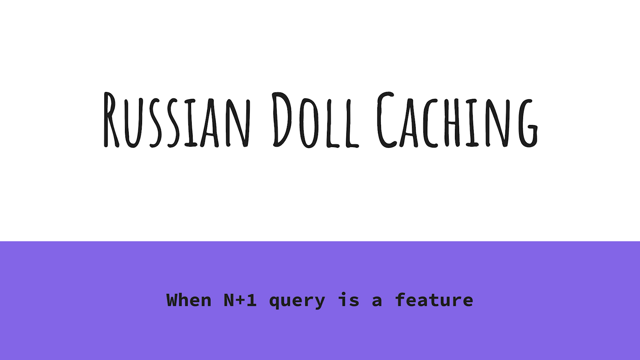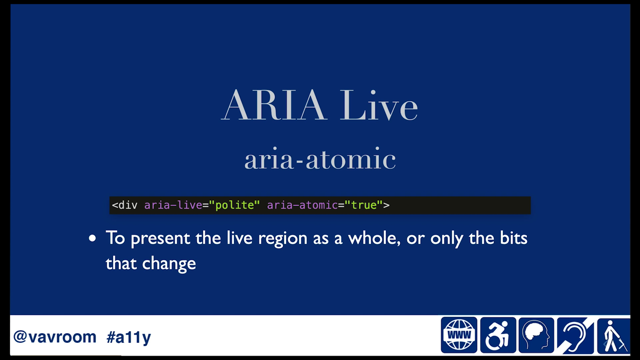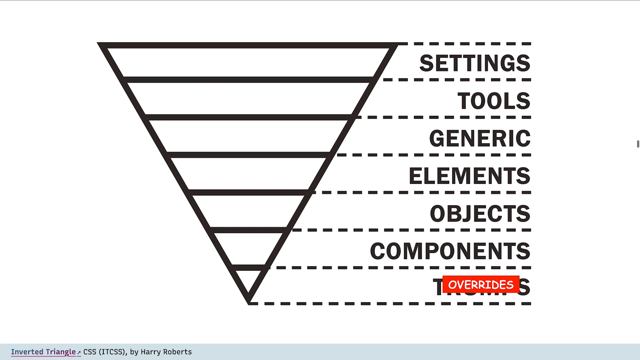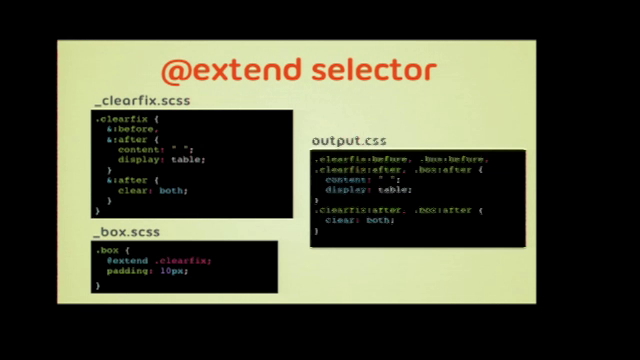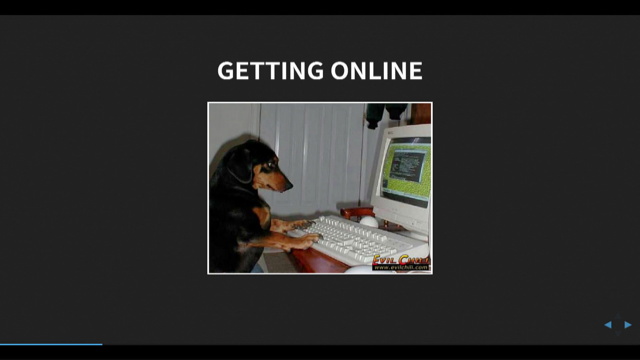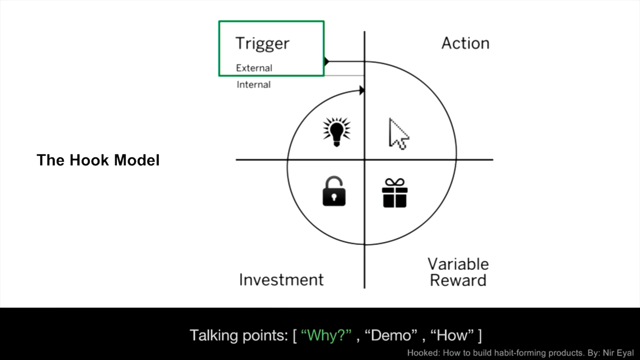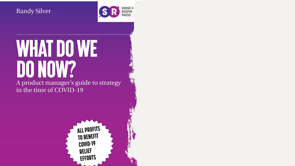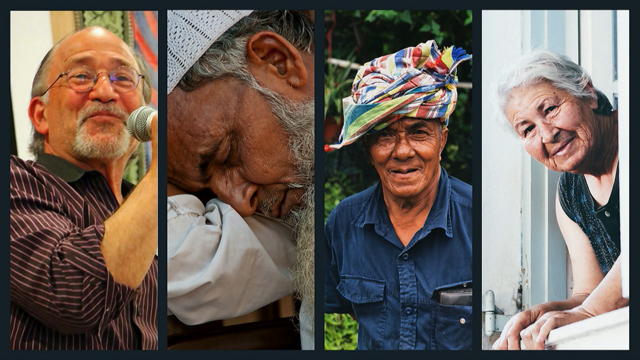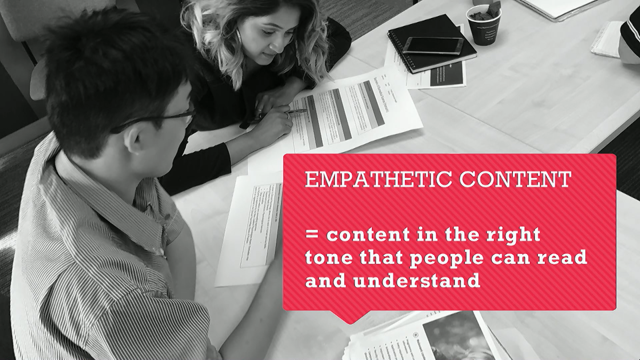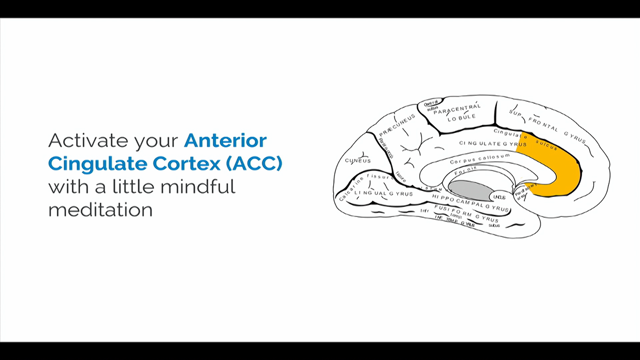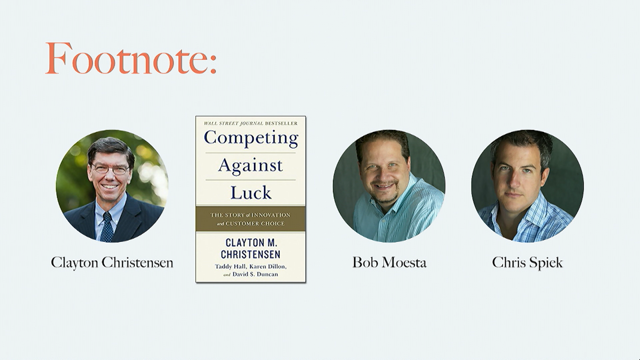
(upbeat music) - [David] So, I'd like to tell you a story so it's a story about a job to be done, which is obviously topical.
Chapter one: the journey is more important than the destination.
So, this morning I had to get here, which obviously I achieved because I'm here but I didn't always know how I was going to get here. So sometime ago, I found my hotel booking email and I tapped on the hotel address to open up Google Maps. Actually, Apple Maps opened first.
I copied the address from Apple Maps, pasted it into Google Maps.
A taxi was a pretty good bet, getting me here on time, but I probably have to talk to someone on the phone and that didn't really go with my phone phobia, wasn't very appealing.
Uber would work but then I'd have to be so damn polite to the driver and graciously accept their water and their mints, and see the truth is that my rating is still recovering from the last conference I attended in Melbourne, thanks to some of my colleagues.
So I went to the browser and I googled "public transport "in Melbourne" where I found a .pdf train map. After failing to pinch out a journey using the .pdf on my mobile, a late entrance to this maze of indecision occurred to me: I was going to be travelling in the morning, so I was going to need coffee.
So I consulted several coffee rating services and I triangulated the ideal coffee for the minimum detour to my journey.
I then consulted three weather apps and despaired at the discrepancies but they all suggested rain which was great 'cause I had not packed an umbrella and so I thought "Okay, I'll swallow my pride, I'll attempt an Uber." "Hi Uber driver, thanks, great mints.
"Yes, my rating is a tad low, it's not really my fault. "A product manager, a UX designer, and a UI designer "walked into an open bar tab and we just couldn't leave "until we had thoroughly user-tested everything. "Yes, I think this is the place.
"Yes, I do seem like a decent person despite my rating, "thank you for saying so." So let's take a look at the score: in this timeline, I compared four main competing products for my job of getting here today.
I used over sixteen products to assist me, so side jobs. I spoke to several people, I used this device a lot, and it took my over three months to make my decision. This is from the very first thought to arriving here today. And I know what you're thinking: "Dave, you're weird." (audience laughs) But stay with me okay, because the funny thing is so are you.
There is a theory that there is a series of consideration points that occur with each of the things we pull into our lives.
Sometimes decision process happens in milliseconds, like choosing a chocolate instead of an apple or it could be over years, like choosing to move house. And as you progress through this timeline, forces emerge, some that are promoting change while others that are blocking change.
And this journey, the competing forces, the consideration set, this is the job description that we write every time we have a problem to solve. So this is the core of a theory called "Jobs-to-be-Done" and I believe, and I hope that you will too by the end of this talk, that applying this theory and knowing this information can help us be better designers.
Okay, phew.
Title slide, made it.
Okay, so, just a footnote: I did not invent Jobs-to-be-Done obviously. I am a passionate practitioner with a few extra techniques that I've discovered along the way.
The people have invigorated recently is Clayton Christensen, a Harvard professor who, amongst other things, wrote Competing Against Luck, or co-wrote and Bob Moesta and Chris Spiek who consulted on Competing Against Luck and wrote and defined the job switch interview technique which I'll describe in a little more detail soon. Another thing, just during this talk, I'll mention products a lot and when I say this, I also mean services or any solution that helps people overcome a problem, and finally it's worth noting that Jobs-to-be-Done theory can be used to help design products and features, as well as marketing material and purchasing experiences.
Chapter two: how to beat the house.
So this is US data, I couldn't find the equivalent for Australia but I still think it's quite interesting. Start-up failure in the first two years in the US is between 60 and 90% so at best, you have a 40% chance of start-up success.
Everybody, let's grab our start-up money, 'cause we're hitting the casino.
Here are a few of the top 20 reasons start-ups reported failing.
So 14% said they ignored their customers, so they didn't interview or research the customer or get feedback.
Another 14% said it was poor marketing.
They didn't know their target audience so they didn't know how to get their attention and convert them to customers.
And the number one reason was no market need. So 42% of failed start-ups reported attacking problems that, while interesting, didn't actually serve a market. In fact, in this research, 40% of the reasons start-ups reported failing was because they didn't create or promote something people actually wanted.
Okay, I hear what some of you may be thinking. "But I don't work for a start-up.
"Our product is rock-solid.
"It's well-established, it's got the majority market share, "our business could never be disrupted." So, how can we create things that provide real value to customers? Why do customers choose one product over another? How do some products manage to disrupt and innovate while others stay stagnate? How do we tip the probability of success in our favour? Chapter three: if you want to see clearly, use a switch.
So let's talk about talking to customers.
We should all know by now that talking to customers is a good thing.
The purpose of talking to customers or users is to learn how to create things that they want and they love, but we should also know by now that just asking customers what they want is a bad idea. It's a bad idea not because customers don't know what they want.
It's because the answers that people give are based on how they imagine they might behave, not on how they actually would behave.
It's based within the bounds of what they know is possible right now, and not on what could be possible.
So customer research with Jobs-to-be-Done is about diverging, learning, uncovering people's struggles and the struggles they come across as they hire and fire solutions.
So this can be achieved through a technique called switch interviews.
So this is where you focus on the timeline of a switch event.
A switch event is when a person fires an old solution to hire a new one.
I haven't got time to go deep into switch interviews, but I'll give you a quick overview.
So you're gonna need to talk to at least 10 people in your market.
They need to have switched to or from a related product in the last 60 days.
This is so they actually remember what happened and don't just make things up and tell you what they think you want to hear and if you're entering a market where there isn't a lot of competing solutions, you need to find the closest thing and look for adaptations.
You start at the purchase event.
So this is like the scene of the crime and like an investigative journalist, you work backwards unlocking people's stories as it happened.
You want to know the detail of their story. Where were they, who were they with, who did they talk to, the context and the considerations, the functional struggles as well as the social and emotional struggles and amongst this, the forces that are promoting and blocking change and most importantly, you focus on the things that actually happened, their story.
You never venture into speculation or hypothetical situations.
The output of the switch interviews are two key artefacts: the switch timeline and the forces matrix.
The switch timeline is used to map people's journeys as they decide to fire an old solution and hire a new one and I'm going to step through this timeline in a non-linear way because this is most likely how it would unfold in an interview. In fact, it may end up jumping between events and backwards and forwards as people's memories are unlocked.
So first is buying.
This is the purchase event and you want to start here and work backwards and around this, you get into a deciding phase.
So this is where you'll unlock a lot of considerations and a lot of anxieties people have around this new solution. Further back here is event two and event one, so typically there are two key events that can push people into an active phase of looking. This is where they're actively seeking solutions for their problem.
And then right back here is the very first thought. So this is tracking back to the very, very first time the person thought about change or making progress so this is where they'll enter the passive phase of looking. They'll start to notice potential solutions but they won't be actively seeking them.
And once you get all the way to the end, you want to come all the way forward again and look at experience.
This is where you enter the consumption phase and you start to uncover if the product delivered on the person's expectations.
So interestingly, a lot of research techniques can tend to focus on this end part, the consumption phase but the real richness of understanding is in the passive, active, and deciding phases and this is one of the things that makes Jobs-to-be-Done theory so powerful.
So to give you an example in practise, we recently conducted 10 switch interview techniques on people who purchases audiobooks for the first time in the last 60 days.
And this is just a brief example of a few things that we uncovered.
First thought: "my commute is pretty boring. "I wish I could do something constructive." Event one: "I had a particularly long and boring commute," so maybe they experienced delays and this caused them to go and talk to a friend often about their problems and it was often a friend who would suggest audiobooks and in particular, the Audible product and what we found was these people and their commutes, they were typically employing podcasts to entertain themselves and this leads us to event two: "I'm struggling to find enough relevant podcast "content for my trip." So around here, we heard anecdotes of people desperately seeking podcast content in their cars just before they left because they knew they wouldn't be able to change it later on in their journey.
And then there was the buying event.
"I'm wasting my time.
"I want to be productive." So this was the "now is the time" moment.
They are commuting, they're bored, they're trapped, and they're spending way too much time with their own thoughts and often at this point, these people will get to their destination, they'll immediately load up the Audible website, see that there's a 30 day trial, and sign up on the spot, sometimes not even knowing what they were going to listen to.
And then in the experience phase, we heard a lot of feedback, particularly around the Audible app.
So users gave us feedback like reference materials such as tables and diagrams, that were mentioned in nonfiction books, was hard to access later when they wanted to. So there was a lot more detail that we uncovered but hopefully this gives you an idea of the kinds of things you discover in the switch interviews.
The other artefact I mentioned was the forces matrix so this maps the four forces around a person's decision to switch.
So first there are forces promoting change: there's a push, the things that cause people to consider their options, the pull or things that attract people to new solutions, and then there are the things that are blocking change, so anxieties, the thing that people are concerned about around a potential new solution, and then habits, the things that are keeping people bound to their current solution or status quo. So for example, jumping back to the audiobook research, a key push was commuting more than 45 minutes in a journey and a pull was specifically related to the Audible product was more variety of content to match my mood so not just nonfiction podcasts, but fiction as well. An example of an anxiety was that people reported they felt overwhelmed by the commitment to an audiobook so some books can take 36 hours or more to complete and people felt they couldn't dip in and out of a long audiobook and mix it with the other content they like to listen to.
And then on the habits side, there were some things you'd expect like podcasts and their music.
If they wanted to read a book, they tended to want to buy an eBook or a paperback book so if people could use their hands and view a screen and not get motion sickness, they would prefer other activities like actually read a book rather than listening to a book.
And also they listen to content like Ted Talks and YouTube content so not watching the visuals, just listening and this is interesting because it's an adaptation. Chapter four: to find a treasure, you need a map. So when I first learned about Jobs-to-be-Done theory, I really loved the concept but I couldn't find a lot of practical examples of how to apply it. So I teamed up with a product designer, a friend of mine called Greg Lesir, and we evolved our own process to aggregate switch interviews and turn them into opportunities and actual solutions.
So our process takes the form of a workshop with your team and your stakeholders.
This workshop structure is heavily based on the Google Venture Design Sprint with a few tweaks. So the Design Sprint, if you don't know, is an excellent format that brings together some of the best product design workshopping techniques I've come across, but it doesn't matter if you're not familiar with it. I'm going to give you a quick overview of process today. First you need to combine the timeline and the forces diagrams from your interview. This is to start building our single innovation blueprint. To achieve this, you draw out a single timeline with your team and then you add the common events from your individual interview timelines.
So I think it's important to do this with all of your team and your stakeholders if you can. It gives them a chance to see the raw research data and actually empathise with your customers and this will give you an aggregate journey from all of your interviews.
Next, we take the forces matrix from each interview and we step through the forces that we uncovered. You place them around the moment they occurred in the timeline and you add stickers on each to note the number of times you heard it in the individual interviews.
So using green for push and pull, the forces moving customers to a new solution, and red for habits and anxieties, the forces that are blocking progress.
And you start to form a picture of where the biggest forces in people's timelines are as well as the context of these forces.
Now that you have a blueprint, you need to define the opportunities with How-Might-We questions. So writing How-Might-We questions is about reframing the forces into opportunities.
So I set a timer and we get each member of the team to independently write as many How-Might-We questions as they can related to each of the forces we've defined. And then we place the questions on the wall under the related forces and we combine any that are the same question. So I'll show you some example How-Might-We questions in just a minute that we wrote from the audiobook research but I just want to jump through a few more steps in the workshop and I'll come back to it. So next, and this is pretty much following the Google Ventures Design Sprint, you go through an ask the experts phase, where you bring in specialist knowledge, people with special knowledge to ask questions and share their expertise.
You try and ask some tough questions about how we might fail, what assumptions we are making, then it's time to vote on the top three to five How-Might-We questions.
That's not to say other How-Might-We questions are not important, but it's best to keep focused and come back another day if you feel there are more opportunities.
So next there is lightning demos.
So this is where the whole team shares cool, related, or unrelated things to seek creativity and then, my favourite part, is ideation. So now loaded up with the context and the understanding and inspiration, this is where you actually start to sketch solutions.
So once again, switching back to the audiobook research, here are some examples of the output.
So the first example is a simple product optimization from this How-Might-We question.
"How might we allow people to access diagrams and tables "easily when they are ready to?" Okay, so this is the quality of the sketches at the ideation phase.
You just want to get the core of the idea on paper. So this solution suggests a feature which stores mentions reference material in a tab for quick access later so a counter showing a number of missed tables or diagrams that you can tap on when you're ready.
This next example was born out of this question: "How might we offer content that fits better "into the length of a commute?" This solution suggests that we could write content specifically for audio consumption.
For example, 45 minute episodes in a series rather than a single book so think modern radio plays, something you can dip in and out of depending on your mood. So here, they've suggested an eight-part zombie apocalypse series, might be good for your morning commute. The last example: "How might we entertain people "who are doing something that restricts the use "of their hands and their ability to watch a screen?" So this one's interesting because it started to generate out-of-market solutions, things that might compete with audiobooks.
For example, a completely audio game.
So this game is called Battle Howl, you command your troops with your voice, no visuals, just the troops reporting on the radio and you giving commands.
So this is just three ideas from three questions and we wrote about 30 good How-Might-We questions in this workshop and for each question, we had maybe three to five good ideas.
I'm not saying that we could not have come up with these sorts of things without Jobs-to-be-Done theory or that yelling battle strategy at your phone while you're driving is necessarily the best idea ever, but what I hope I'm demonstrating is Jobs-to-be-Done gives us a common language to define problems, a way to understand people's struggles, and a repeatable method to hit the mark more often but our work is not quite done.
We have to prototype the solutions, we need to test them with users, we repeat it till it's awesome, and then success. So there are a few more details involved, so you can check out Jobs-to-be-Done Pro for more information.
So understanding the struggles people are trying to overcome in their lives, the forces at play over the timeline to fire one product and hire another, gives us an advantage to create things that people will love.
It helps to explain why people switch and pull in new solutions into their lives. Jobs-to-be-Done theory is a tool that provides a repeatable method and a blueprint to create things that people will love.
And finally, I think it's time for all of us to get on with our next, most important job to be done: lunch. (audience applause) My name is David, find me at these places.
(upbeat music)
